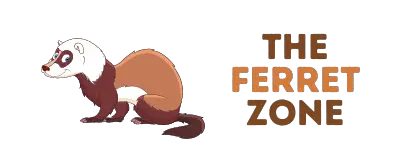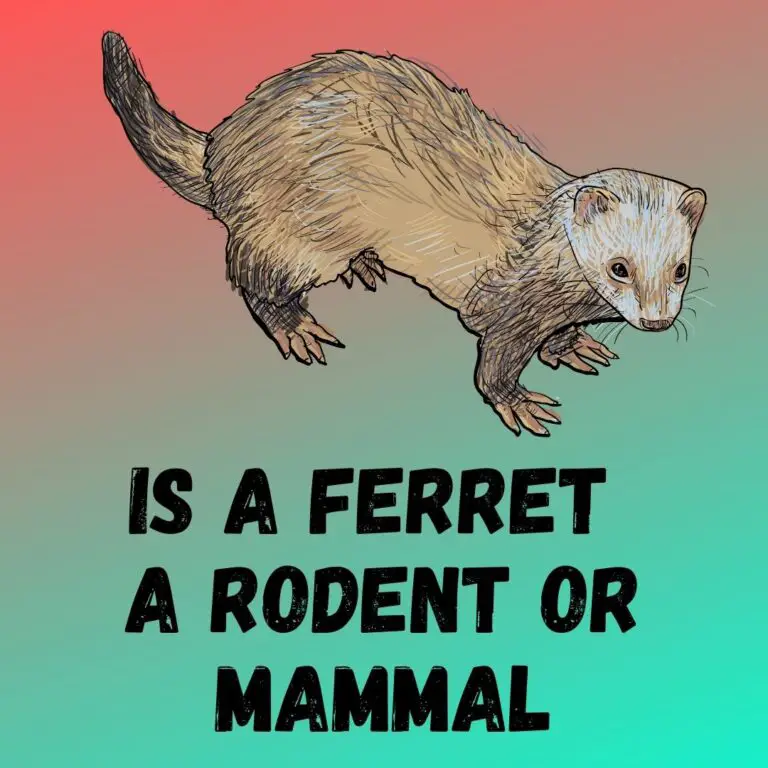
Hey there! If you’re a fan of cute and curious creatures, then you’re in for a treat. Today, I want to introduce you to a fascinating animal that often flies under the radar – the Black Footed Ferret. These adorable critters are not only incredibly charming but also hold a special place in conservation efforts. Join me as we dive into the world of the Black Footed Ferret and discover why they are worth celebrating.
Picture this: a small, sleek mammal with a distinctive black mask and a slender body. That’s the Black Footed Ferret! While they may resemble domestic ferrets, these little guys are unique in their own right. With their long, slender bodies and sharp claws, they are natural-born hunters. But what truly sets them apart is their status as one of North America’s most endangered species. With only a few hundred individuals left in the wild, the Black Footed Ferret is a true symbol of conservation and the importance of preserving our natural habitats.
Key Takeaways
- The Black Footed Ferret is a small, slender mammal with a distinctive black mask and a slender body. It is one of North America’s most endangered species and symbolizes the importance of conservation.
- The appearance and characteristics of the Black Footed Ferret include its small size, black-tipped tail, sharp claws for hunting, nocturnal lifestyle, and unique adaptations for survival.
- The Black Footed Ferret is critically endangered due to habitat loss, prey loss, disease, predation, and limited genetic diversity. Conservation efforts are crucial to ensure their survival and prevent their extinction.
- Conservation efforts for the Black Footed Ferret focus on preserving their habitat, reintroduction programs, disease management and predator control, and ensuring genetic diversity.
- By raising awareness, supporting conservation organizations, and implementing effective strategies, we can play a vital role in protecting and preserving the Black Footed Ferret and its biodiversity.
Appearance and Characteristics of the Black Footed Ferret
The Black Footed Ferret is a fascinating creature with unique features that make it easily recognizable. Here are some key aspects of its appearance and characteristics:
1. Size and Body Structure:
The Black Footed Ferret is classified as a small mammal, growing to an average length of 18-24 inches (46-61 cm) and weighing around 1.5-2.5 pounds (0.7-1.1 kg). It has a long and slender body, allowing it to move smoothly through its grassland habitat. Their small, rounded ears and short legs give them an adorable and distinct look.
2. Coloration and Markings:
One of the most striking features of the Black Footed Ferret is its black mask, which covers its eyes, giving it a masked appearance. Its fur is mostly light brown or buff colored, with a lighter underbelly. They have a distinctive black-tipped tail with a bushy appearance.
3. Adaptations for Hunting:
The Black Footed Ferret is known for its exceptional hunting abilities. It has a set of sharp, curved claws that enable it to dig burrows and capture its prey effectively. These claws also allow it to climb trees and fences with ease, making it a versatile hunter. Their teeth are sharp and designed for consuming meat, as they mainly feed on small mammals like prairie dogs.
4. Nocturnal Lifestyle:
Black Footed Ferrets are primarily nocturnal creatures, meaning they are most active at night. This adaptation helps them avoid predators and allows them to take advantage of the cover of darkness while hunting for food. Their keen night vision, sharp hearing, and well-developed sense of smell all contribute to their ability to navigate and locate prey even in low light conditions.
5. Endangered Status:
Despite their unique characteristics, the Black Footed Ferret is critically endangered. Due to habitat loss, disease, and human activities, their population has drastically declined over the years. Conservation efforts and initiatives are crucial to ensure their survival and prevent their extinction.
Understanding the appearance and characteristics of the Black Footed Ferret is essential in appreciating and conserving this remarkable animal. Their distinctive traits and endangered status make them all the more deserving of our attention and protection.
The Endangered Status of the Black Footed Ferret
The Endangered Status of the Black Footed Ferret
The Black Footed Ferret is a critically endangered species, facing numerous threats that have led to its decline over the years. As one of North America’s most endangered mammals, the conservation of these ferrets is of utmost importance. Below, I discuss the factors contributing to their endangered status:
- Habitat Loss: One of the major reasons for the decline of the Black Footed Ferret is the loss of its natural habitat. The rapid expansion of urban areas, agriculture, and industrial development has resulted in the destruction and fragmentation of their grassland habitats. This loss of suitable living spaces has significantly impacted their population size.
- Prey Loss: Black Footed Ferrets primarily feed on prairie dogs, which themselves are declining due to habitat loss and extermination efforts. As the population of prairie dogs decreases, the ferrets’ food source diminishes, leading to a decline in their own numbers. This interconnected relationship between the two species further exacerbates the threat to the ferrets’ survival.
- Disease and Predation: The Black Footed Ferrets also face threats from diseases and predation. They can fall victim to various illnesses, including sylvatic plague, which is caused by fleas and can devastate their populations. Additionally, predators such as coyotes, badgers, and raptors pose a significant risk to their survival.
- Limited Genetic Diversity: With such a small population size, Black Footed Ferrets suffer from limited genetic diversity. This lack of genetic variation leaves them vulnerable to diseases, reduces their ability to adapt to environmental changes, and increases the risk of inbreeding depression.
The future of the Black Footed Ferret depends on our collective efforts to mitigate these threats. The conservation of their habitats, reintroduction programs, and the control of diseases and predators are crucial steps in saving this remarkable species from extinction.
By raising awareness, supporting conservation organizations, and implementing effective conservation strategies, we can play a vital role in ensuring the survival of the Black Footed Ferret for future generations. Let’s work together to protect and preserve this amazing creature and all the biodiversity it represents.
Conservation Efforts for the Black Footed Ferret
Conservation efforts are essential in safeguarding and preserving the endangered Black Footed Ferret. To ensure the survival and recovery of this remarkable species, various initiatives have been implemented. Here, I’ll discuss some of the key conservation efforts aimed at protecting the Black Footed Ferret population.
1. Habitat Conservation: The first crucial step in the conservation of the Black Footed Ferret is preserving its habitat. Efforts are being made to maintain and restore the native prairie grasslands, which serve as vital habitats for the species. By protecting and managing these areas, we can provide suitable living conditions for the ferrets, including an abundant supply of prey.
2. Reintroduction Programs: Reintroduction programs have played a significant role in the recovery of the Black Footed Ferret. These programs involve releasing captive-bred ferrets into suitable habitats to establish new populations. Through careful monitoring and management, these reintroduced ferret populations have shown promising results, contributing to the species’ overall recovery.
3. Disease Management and Predator Control: Disease and predation are major threats to the Black Footed Ferret. Efforts are being made to control the spread of diseases, such as canine distemper and plague, which can decimate ferret populations. Additionally, predator control measures, such as the relocation of prairie dogs (a key source of prey for ferrets) away from human settlements, help reduce conflicts and allow ferret populations to thrive.
4. Genetic Diversity: Limited genetic diversity is another challenge faced by the Black Footed Ferret. Inbreeding can lead to reduced fitness and reproductive success. To address this issue, genetic management techniques are employed to ensure healthy and diverse populations. These techniques include assessing the genetic health of individuals, carefully selecting breeding pairs, and creating gene banks for future conservation efforts.
The conservation efforts for the Black Footed Ferret are making a difference in the survival and recovery of this endangered species. However, ongoing support, awareness, and investment are necessary to maintain these efforts and ensure a brighter future for this incredible animal. By actively supporting conservation organizations and implementing effective strategies, we can contribute to the long-term preservation of the Black Footed Ferret and its unique place in our natural world.
Conclusion: Celebrating the Black Footed Ferret’s Importance
Throughout this article, we have explored the endangered status of the Black Footed Ferret and the various factors contributing to its decline. It is clear that conservation efforts are crucial in saving this remarkable species from extinction.
By focusing on habitat conservation, reintroduction programs, disease management, predator control, and genetic diversity, we can make a significant impact on the Black Footed Ferret population. These efforts not only benefit the ferrets themselves but also contribute to the overall health of ecosystems they inhabit.
However, our work is not done. Ongoing support, awareness, and investment are essential to ensure the long-term preservation of the Black Footed Ferret. By continuing to prioritize their conservation, we can celebrate the importance of this species and secure its future for generations to come.
Let us unite in our efforts to protect and cherish the Black Footed Ferret, a remarkable creature that deserves our utmost attention and care. Together, we can make a difference and ensure a brighter future for these fascinating animals.
Frequently Asked Questions
Q: Why is the Black Footed Ferret endangered?
A: The Black Footed Ferret is endangered due to various factors such as habitat loss, disease (specifically sylvatic plague), predation, and limited genetic diversity. These factors have caused a significant decline in their population, making conservation efforts crucial.
Q: What are the conservation efforts being undertaken to save the Black Footed Ferret?
A: Conservation efforts to save the Black Footed Ferret include habitat conservation, reintroduction programs, disease management, predator control, and genetic diversity preservation. These measures aim to safeguard their natural habitat, establish additional populations, mitigate the effects of diseases, control predators, and maintain genetic health.
Q: How can I support the conservation of the Black Footed Ferret?
A: You can support the conservation of the Black Footed Ferret by raising awareness about their endangered status, donating to conservation organizations, volunteering for monitoring or research programs, participating in citizen science initiatives, and supporting legislative actions that protect their habitat.
Q: Why is genetic diversity important for the survival of the Black Footed Ferret?
A: Genetic diversity is crucial for the survival of the Black Footed Ferret because it helps enhance their adaptability and resilience to environmental changes, prevents inbreeding-related health issues, and improves their overall reproductive success.
Q: Is the survival of the Black Footed Ferret guaranteed?
A: The survival of the Black Footed Ferret is not guaranteed. While conservation efforts have shown positive results, ongoing support, awareness, and investment are essential to ensure the long-term preservation of the species. Continued efforts are necessary to address existing challenges and prevent potential threats in the future.






